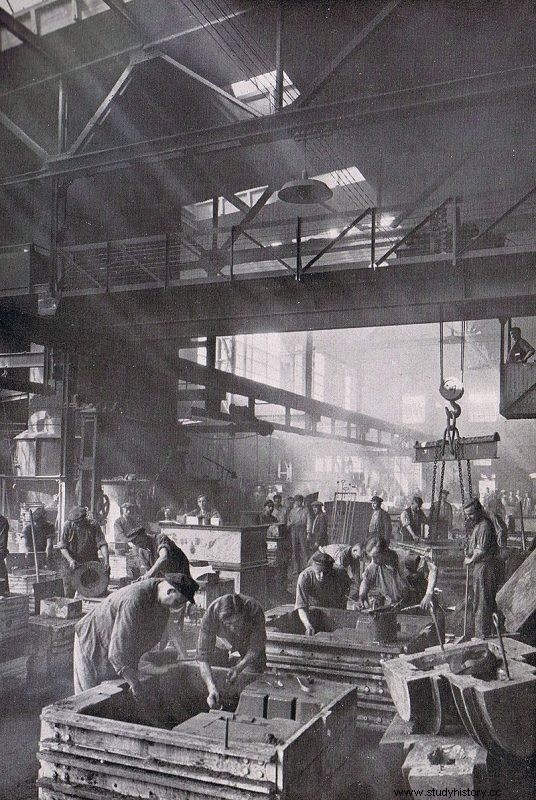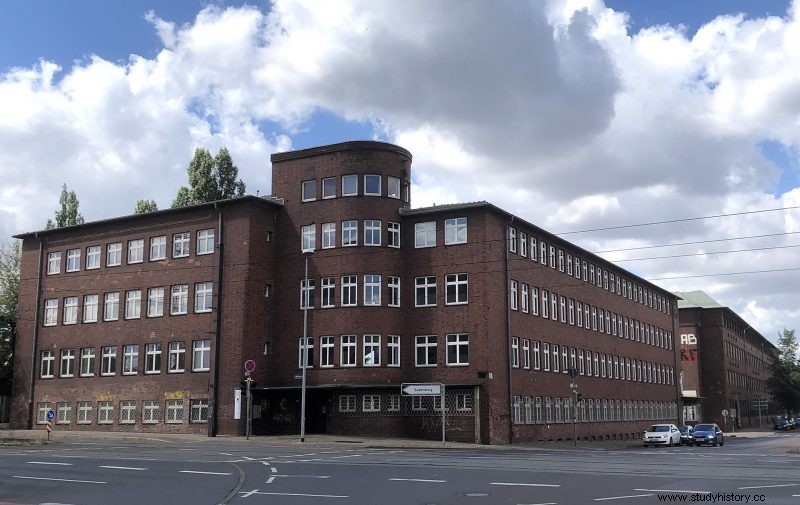The Polte factory, originally called Jürgens &CO, was founded in 1873. It took the Polte name definitively in the midst of the First World War, in 1917.
At first, the company was dedicated to the manufacture of water pumps, gas pumps and other metal elements. However, the Polte factory became infamous for being the largest ammunition factory in Germany during both world wars.

Already during the First World War, millions of cartridges and thousands of artillery shells were sent to the German imperial forces. After the conflict, the factory had to close its doors due to the provisions of the Treaty of Versailles.
However, Polte resumed ammunition production in 1924, following an international inspection. From that moment on, the volume of ammunition produced there did not stop growing. In 1934 the Nazi regime turned it into the largest ammunition factory in Europe. By the end of the war, Polte had produced 50% of the German Army's ammunition.
This volume of production could only be carried out thanks to the use of forced labor. Since 1939, thousands of forced laborers from concentration camps, as well as prisoners of war, worked as slaves producing weapons for the Wehrmacht.

Most of the factory was destroyed during a major air raid in 1945. However, the structure of the factory complex is still visible today. In front of the old administration building you can see a commemorative plaque in memory of the prisoners who worked and died there.
How to get to the Polte arms factory
The old Polte armament factory is located to the west of the city, at the intersection of Westring avenue and Liebknechstr. To get there you can take the tram to the Liebknechstr. stop.
